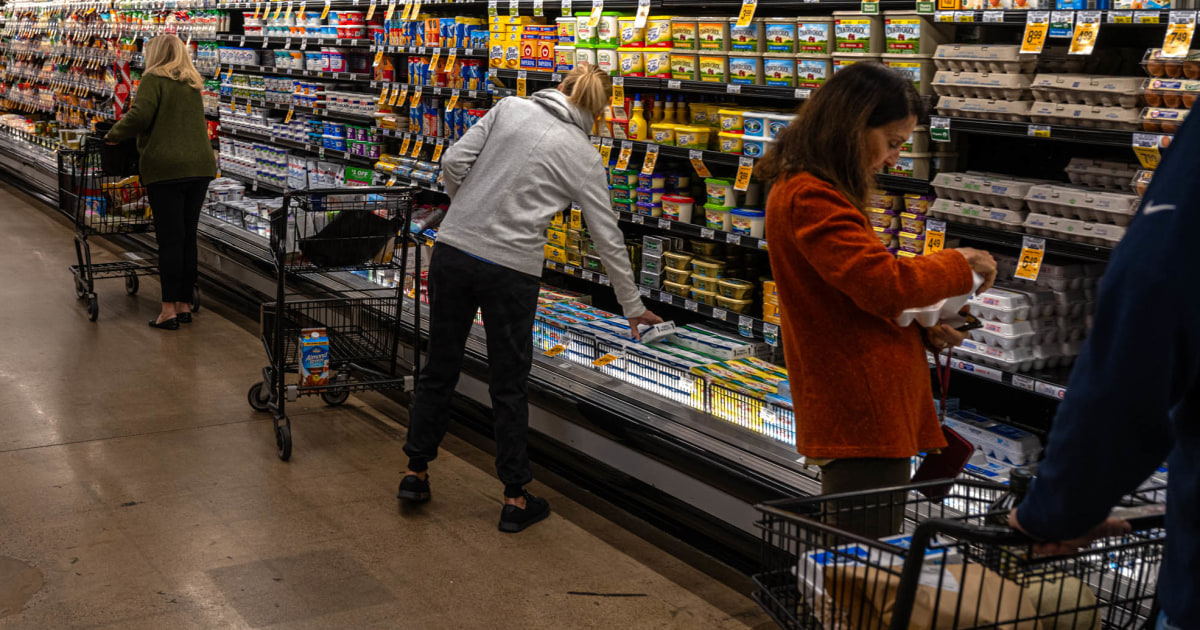Ahead of the latest monthly inflation reading, consumers are still coming to terms with the sticker shock of everyday goods and services prices — and lingering uncertainty about the economy.
The pace of consumer price growth was expected to have remained largely unchanged in September, according to Dow Jones estimates.
Yet even as costs have normalized, America continues to adjust to prices that are more than 21% higher on average compared to early 2020, with some goods and services surging even more.
Higher costs remain the top-ranked issue of concern for voters heading into November’s election. Former President Donald Trump has sought to tie Vice President and Democratic presidential candidate Kamala Harris to those price increases, accusing her of sitting by while the Biden administration approved spending he says has helped fuel the inflation boom.
But economists remain uncertain about the extent that fiscal stimulus has influenced inflation, with many saying supply chain issues and changes in consumer behavior have played an equal or greater role.
Trump has not offered a detailed economic plan besides proposing a blanket set of tariffs that he says will boost jobs and raise revenues — outcomes many economists have said are debatable.
For her part, Harris has proposed measures including capping rent and grocery price increases, policies whose efficacy — let alone ability to get approved by lawmakers — have likewise been met with skepticism by some analysts. Harris has narrowed the gap in some surveys about which presidential candidate would be better on economic issues, but Trump still leads on that metric.
While both parties’ candidates agree prices are hurting everyday consumers, the nation is also starkly divided when it comes to views on the state of the economy. According to the most recent University of Michigan Consumer Survey, Republicans’ ratings of current economic conditions are at the lowest levels on record, while Democrats’ views are nearly three times more favorable.
The Biden-Harris administration has been enjoying a tailwind in the form of minimal growth in gasoline prices: Compared with the same period a year ago, the average price of a gallon of fuel is about $0.50 cheaper, according to AAA. Prices could begin to creep up again amid turmoil in the Middle East that has already sent oil prices higher but, for now, one of the most accessible signals of price increases remains muted.
Analysts generally agree that’s a sign the economy remains on solid footing, at least according to the data. Today’s inflation numbers could cause Wall Street to pare back expectations of an interest-rate cut at the Federal Reserve’s next meeting in November. Following an unexpectedly strong jobs report last week, traders virtually erased the odds of another half-point cut, and heading into Thursday had increased the odds of no cut at all to more than 1 in 5.
Yet there remain significant questions about where the economy is going. In its most recent reading, the National Federation of Independent Business, which represents small business owners, found its uncertainty reading had hit an all-time high.
“Uncertainty makes owners hesitant to invest in capital spending and inventory, especially as inflation and financing costs continue to put pressure on their bottom lines,” said NFIB economist Bill Dunkelberg.
“Although some hope lies ahead in the holiday sales season, many Main Street owners are left questioning whether future business conditions will improve,” he said.

Leave a Reply